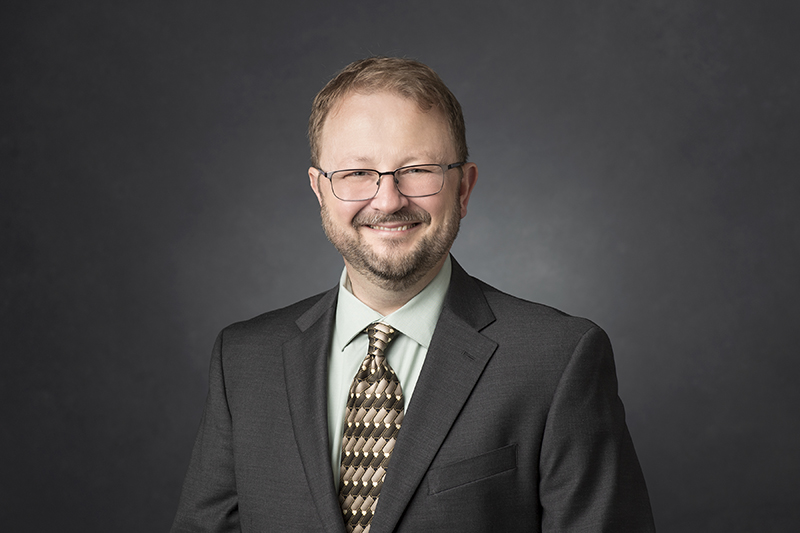Gabor Csathy named Purdue Physics and Astronomy Department Head
2022-07-29

On July 19, 2022, Dr. Patrick J. Wolfe, Frederick L. Hovde Dean of the College of Science, announced that Dr. Gabor A. Csathy is the new department head of the Purdue University Department of Physics and Astronomy. Csathy was the current interim department head since August of 2021 as well as professor of Physics and Astronomy.
“I am extremely honored to have been chosen to be the next head of the Department of Physics and Astronomy,” says Csathy. “During my tenure here as a professor and especially over the last year as an interim head, I got to know the Department as a closely knit community. The Department is clearly on an ascending path and the positive changes over the last decade or so reflect the efforts of all our stakeholders, from faculty, staff, students, to alumni. I am optimistic about the future and immensely proud to lead the department through our next stage of growth.”
Csathy has been with the department since 2006. Prior to this, he was performing research in the Department of Electrical Engineering at Princeton University, after earning a PhD in experimental physics at Pennsylvania State University. The search for department head began last year and was chaired in two rounds by Dr. Steven Durbin and Dr. Chris Greene, both of Purdue Physics and Astronomy. Csathy assumes the position from Dr. John Finley who served as a head from 2015 to 2021.
“In a distinguished field of head candidates Gabor stands out for his dedication and experience in serving the department to date alongside his consistent efforts as a research leader,” said Wolfe. “His laboratory develops unique techniques to probe and study electronic nanostructures under extreme temperatures and pressures, leading to results that appear in leading journals and are supported by a variety of competitive funding sources. His students have won thesis awards both here and internationally, and his group’s work has been featured repeatedly in Purdue news releases.”
Csathy is an experimental condensed matter physicist who is broadly interested in the field of topological physics. He is involved in searching for new topological phases, studying the ones with the most exciting properties, and investigating the competition of these topological phases with traditional broken symmetry states. For now, the energy scales of most topological materials are relatively small, hence Csathy focuses to measure these materials under extreme conditions (such as very low temperatures, strong magnetic fields, high pressures, and low-noise electrical environments). The technologies and the semiconductor processing techniques extensively used in Csathy’s lab continue to provide his students with critical skills needed in today’s academia, national labs, and high-tech industry, including the semiconductor industry, cryogenics, and quantum computing.
“I’m especially delighted that Gabor is willing to devote much of his time and energy to leading the department to ever greater heights,” says Wolfe. “As we prepare to reach these heights, one immediate development is an agreement we’ve reached with Gabor to invest up to a half-million dollars from the College for a comprehensive review of Physics and Astronomy spaces and infrastructure, with an eye to upgrading and modernizing our facilities to underpin the continued strengthening of the department.”
About the Department of Physics and Astronomy at Purdue University
Purdue Department of Physics and Astronomy has a rich and long history dating back to 1904. Our faculty and students are exploring nature at all length scales, from the subatomic to the macroscopic and everything in between. With an excellent and diverse community of faculty, postdocs, and students who are pushing new scientific frontiers, we offer a dynamic learning environment, an inclusive research community, and an engaging network of scholars.
Physics and Astronomy is one of the seven departments within the Purdue University College of Science. World class research is performed in astrophysics, atomic and molecular optics, accelerator mass spectrometry, biophysics, condensed matter physics, quantum information science, particle and nuclear physics. Our state-of-the-art facilities are in the Physics building, but our researchers also engage in interdisciplinary work at Purdue’s Discovery Park, particularly the Birck Nanotechnology Center and the Bindley Bioscience Center. Furthermore, we participate in global research including at the Large Hadron Collider at CERN, Argonne National Laboratory, Brookhaven National Laboratory, Fermilab, the Stanford Linear Accelerator, the James Webb telescope, and several observatories around the world.
Writer: Cheryl Pierce, Communications Specialist
Photo by: John Underwood, Purdue University Marketing and Communications